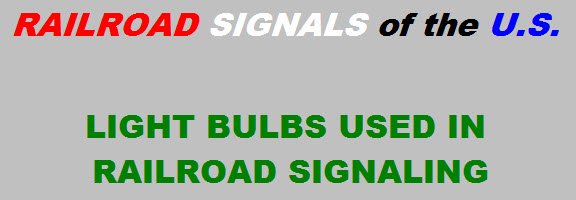
In General
History
Bulbs
LED's
Special Bulbs
References

In General
History
Bulbs
LED's
Special Bulbs
References
RAILFAN GUIDES HOME
RAILROAD SIGNALS HOME
What would railway signals be today if it was not for the electric light bulb?
Until the early 1900’s, kerosene lamps were used for illumination. Railroads heralded the day electric light bulbs came around, mainly because it saved them money, just like diesels did, but more importantly, it made signals easier to see.
A quick rundown of the history of the light bulb follows, and a good all around source for “how they work” is at the Living on Earth webpage. (7)
Major Milestones in the Development of the Electric Light Bulb and LED's
1800 - Humphrey Davy, an English scientist, experimented with electricity and developed a battery. He connected the battery to a piece of carbon and it glowed. First recorded incident of producing artificial light with an electrical source. (1)
1860 - English physicist Sir Joseph Wilson Swan devised a practical basic electric light. He used a carbon paper filament, but it burned up quickly. He demonstrated the new electric lamps in Newcastle, England in 1878.
1877 - American Charles Francis Brush made carbon arc lights to light a public square in Cleveland OH. These lights were used on a few streets, in a few large office buildings, and even some stores. Electric lights were only used by a few people.
Note: Carbon arc lamps are not the same as incandescent light sources. Light was generated by an arc across two carbon rods. The light source was very bright, and needed constant attending to as the carbon rods wore down. An incandescent light source produces light as a result of the current flow through a material, mostly tungsten, causing the metal to glow.
1879 - American inventor Thomas Alva Edison discovered that a carbon filament in a vacuum (oxygen-free) bulb glowed but would not burn up for 40 hours. He had experimented with thousands of different materials to find just the right one(s) that would glow well and last a long time. He eventually produced a bulb that could last for over 1500 hours. His patent was number 223,898, issued on January 27, 1880. (1)(2)
1881 - Lewis Howard Latimer (a member of Edison’s research team) improved the bulb by inventing a carbon filament. In 1882, he developed and patented a method of manufacturing his carbon filaments.
1903 - Willis R. Whitney invented a treatment for the filament so that it wouldn't darken the inside of the bulb as it glowed.
1910 - William David Coolidge invented a tungsten filament which lasted even longer than the older carbon filaments. We were off and running!
1962 - Nick Holonyak Jr., while at General Electric (Syracuse NY), invented the first practical light-emitting diode and the first semiconductor laser to operate in the visible spectrum. He had worked with John Bardeen, who was one of the three co-inventors of the transistor. (3)(4)
1993 - Shuji Nakamura (a researcher at Nichia Chemical Industries in Japan) after years of research, produced the first commercially viable blue LEDs. (5)(6)
1997 - Nakamura produces the first white LEDs.
Bulbs for signal illumination have been pre-focused for a long time, meaning the positioning of the filament is guaranteed, thereby eliminating the need for most focusing when the bulb is replaced.
The following four scans are from the light bulb section (section "B") of a 1935 US&S catalog.
LED’s are beginning to make headway into the area of railroad signaling.
There are a number of "trilight" style colorlight LED signals on the (SB) Northeast Corridor, just south of Havre de Grace MD. I first noticed them in 2004.
Their colors are pure, they use less electricity, and should have much longer life spans than incandescent light bulbs. We’ll see. I’ve seen far too many LED traffic signal lights that already have some bad LED’s. And LED stoplights and taillights on trucks seem to “burn-out” even quicker!
Here are some examples from around:
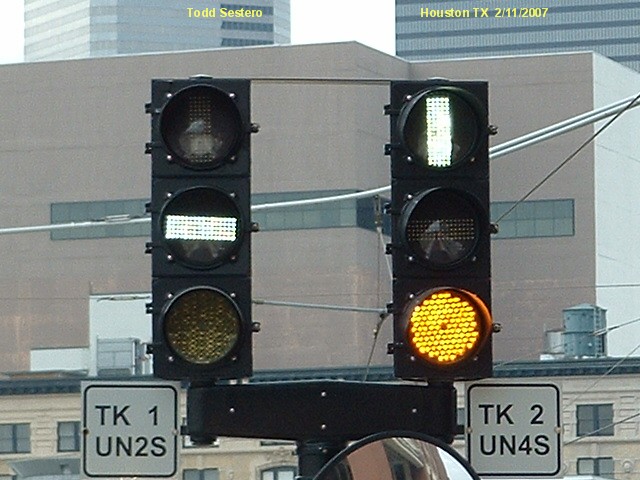
LED's in use on the Houston Light Rail System, 2007
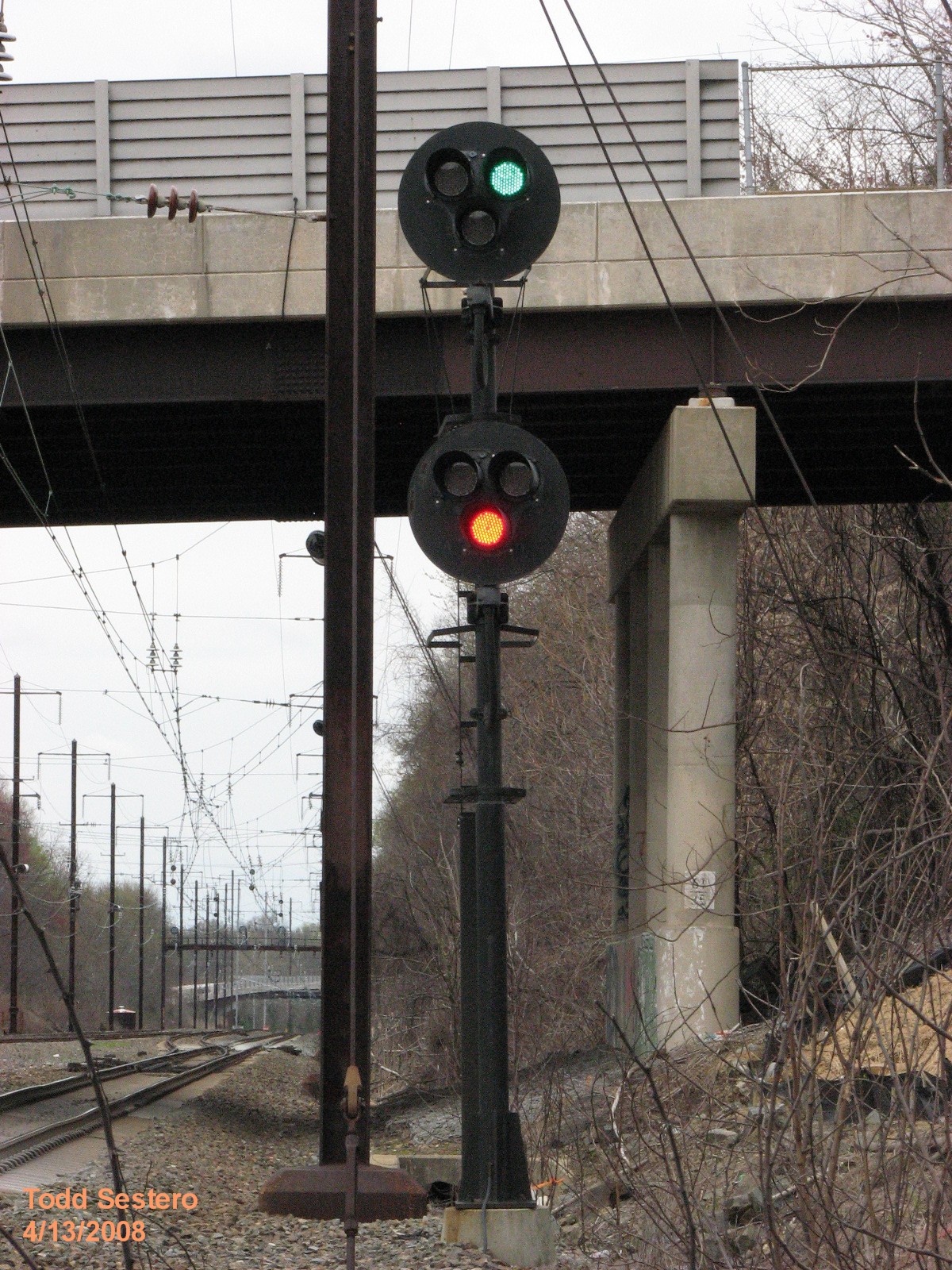
LED "tri-light" signals on the NEC at Havre de Grace MD, 2008

An LED colorlight signal on the Light Rail System in Charlotte NC, 2010
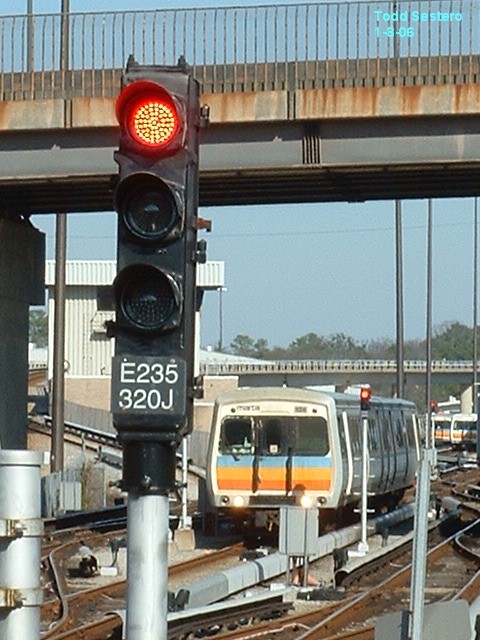
An LED colorlight signal on the Atlanta MARTA Metro system, 2006

An interesting signal installation on the NEC in Wilmington DE. If you
notice, the pedestal signal on the left is illuminated by LED's. The one
on the right, has two incandescent bulbs in the upper position, and an LED in
the bottom.
Every industry has their special application bulbs, the railroad industry is no exception. Here are a few.
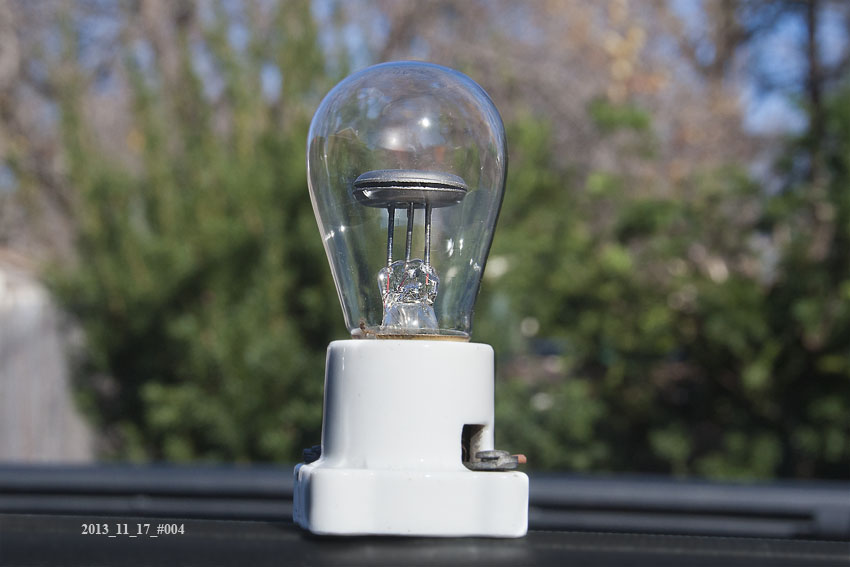
The little pear
shaped neon lamp, a General Electric type NE-40, came from the little repeat
coil board in the Reading's Chester passenger station, and was on a telephone
circuit. The lamp was probably used as a ring indicator for 90 volt 20
cycle ringing current. It probably dates from the 1940s. It has been "in
storage" for 34 years. Courtesy ADB.
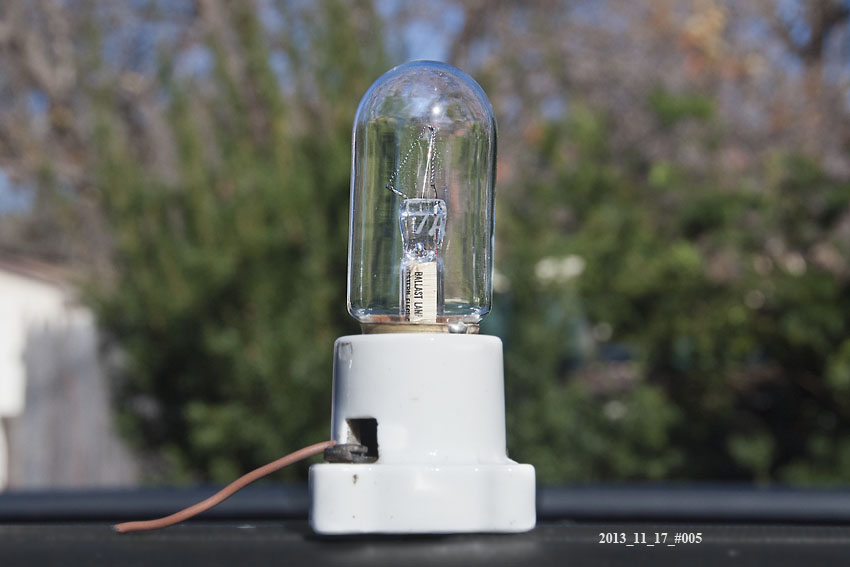
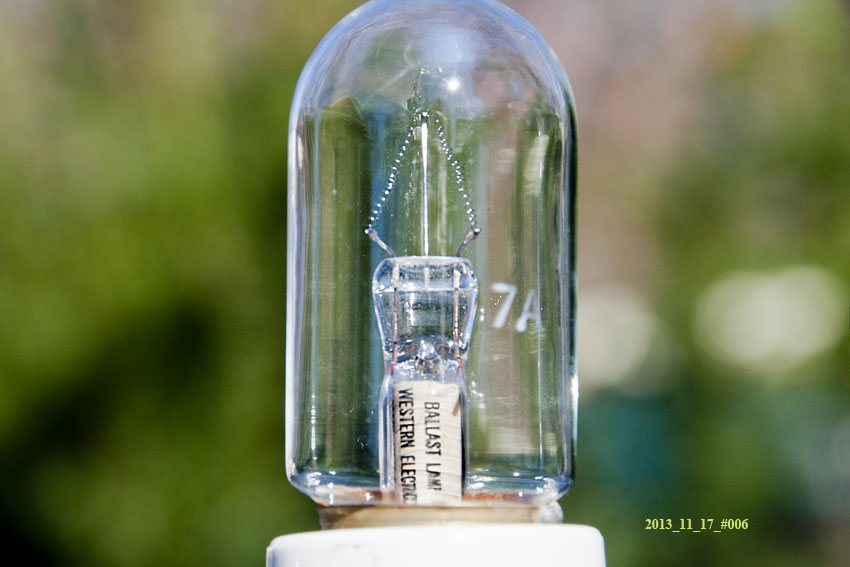
The tubular lamp, a Western Electric type 7A, came from the UD Wire Chief's
Office in the Harrisburg station, where it was used as a ballast resistance on
the 22A repeater circuit and was probably installed new when UD was built in
1937. It has been "in storage" for 25 years. Courtesy ADB.
Note: My source was in the middle of
installing a new 160 mil telegraph circuit, and was
looking for some current-limiting protection. He pulled these out of
storage.
References and Additional Reading:
1 http://www.enchantedlearning.com/inventors/edison/lightbulb.shtml
2 http://www.ideafinder.com/history/inventions/story074.htm
3 http://www.homeadvisor.com/article.show.The-History-of-the-Light-Bulb-in-Your-Home.17366.html nice non-railroad page with many good links, thanks to Erica B and her class for this link
4 http://www.pbs.org/transistor/album1/addlbios/holonyak.html
5 http://itotd.com/articles/253/
6 http://www.engineering.ucsb.edu/Announce/nakamura.html
7 http://www.loe.org/series/LED.php
8 http://science.howstuffworks.com/question244.htm primer on Fresnel lenses
9 http://www.du.edu/~etuttle/rail/sigs.htm well done primer on British signals (some American stuff too)
10 http://www.oksolar.com/led/led_color_chart.htm Great LED color chart/voltage drops/etc
11 http://theledlight.com/technical3.html Alternate version of the last reference
12 http://science.howstuffworks.com/framed.htm?parent=question244.htm&url=http://micro.magnet.fsu.edu/optics/timeline/people/fresnel.html Link to bio of Fresnel
Disclaimers:
I love trains, and I love signals. I am not an expert. My webpages reflect what I find on the topic of the page. This is something I have fun with while trying to help others. My webpages are an attempt at putting everything I can find of the subject in one convenient place.
Please Note: Since the main focus of my two websites is railroad signals, the railfan guides are oriented towards the signal fan being able to locate them. For those of you into the modeling aspect of our hobby, my indexa page has a list of almost everything railroad oriented I can think of to provide you with at least a few pictures to help you detail your pike.
If this is a railfan page, every effort has been made to make sure that the information contained on this map and in this railfan guide is correct. Once in a while, an error may creep in
My philosophy: Pictures and maps are worth a thousand words, especially for
railfanning. Text descriptions only get you so far, especially if you get lost
or disoriented. Take along good maps.... a GPS is OK to get somewhere, but maps
are still better if you get lost! I belong to AAA, which allows you to get
local maps for free when you visit the local branches. ADC puts out a nice
series of county maps for the Washington DC area, but their state maps do not
have the railroads on them. If you can find em, I like the National Geographic
map book of the U.S..... good, clear, and concise graphics, and they do a really
good job of showing you where tourist type attractions are, although they too
lack the railroads. Other notes about specific areas will show up on that page
if known.
By the way, floobydust is a term I
picked up 30-40 years ago from a National Semiconductor data book, and means
miscellaneous and/or other stuff.
Pictures and additional information is always needed if anyone feels inclined to
take 'em, send 'em, and share 'em, or if you have something to add or
correct.... credit is always given! BE NICE!!! Contact info is
here
Beware: If used as a source, ANYTHING from Wikipedia must be treated as being possibly being inaccurate, wrong, or not true.
RAILFAN GUIDES HOMENew SEP8/2005, MAY23/2017
Last Updated: 11/16/2019